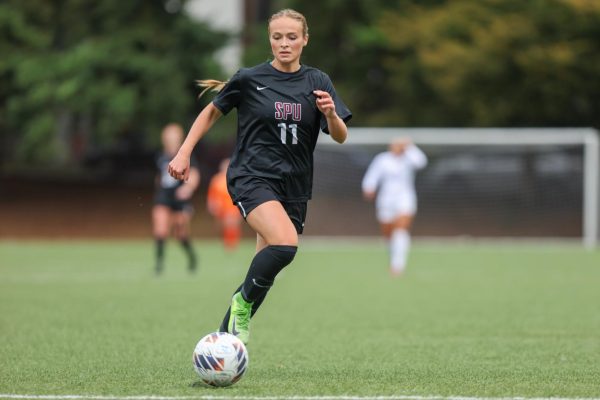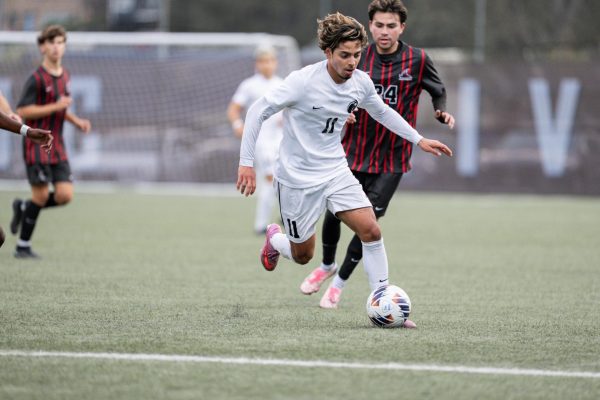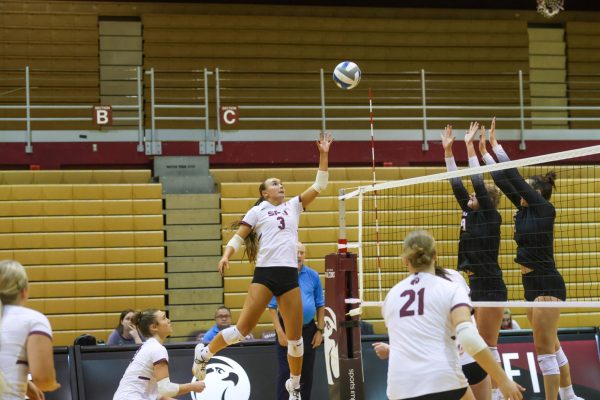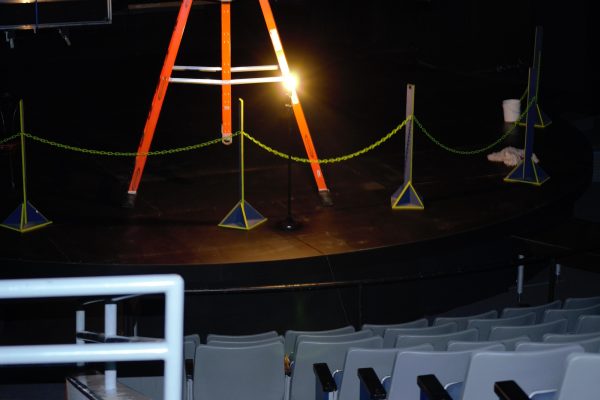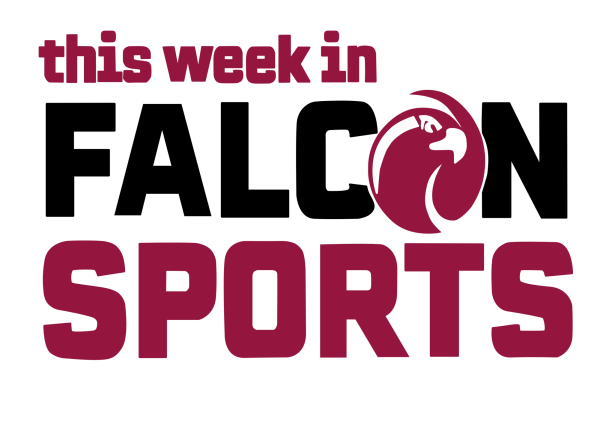Audience should listen to athletes before criticizing
Opinion: more than entertainers; allow them to use their voices
October 28, 2020

While professional leagues have all the glitz and glamour, the games are the same at every level. Footballs get thrown, basketballs get shot, soccer balls fly into the back of the net.
Yet before every game, at any level of competition, the crowd stands, places their hands over their hearts, and listens to someone play or sing our national anthem.
Playing the star spangled banner at sporting events gained traction during the 1918 World Series, as fans found pride in the song in a time of war and death when it was played during the first game of the series.
The moments of pride in the country have also led to controversy, as 200-Meter 1968 Olympic gold and bronze medal winners Tommie Smith and John Carlos gave the black power salute, a fist raised in the air while the anthem played to celebrate their success. They were then kicked out of the Olympic Village in Mexico City and sent home. Basketball player Mahmoud Abdul-Rauf was suspended for one game in 1996 for refusing to stand for the national anthem, saying that he did not believe in a nationalistic ideology. Abdul-Rauf then opted to stand and pray while the anthem played.
If you asked me where I stood in this debate even a year ago, I would have said that pride in the country is obviously a good thing. I wouldn’t have even considered kneeling for the national anthem a good thing or a right as well. I felt as if there was no point to it. Sure, there were a few problems with our country, but they were isolated incidents. Our country was doing just fine, there was no reason to get that upset. Just let me watch my sports in peace. Fortunately, Colin Kaepernick decided not to let us do that.
Kaepernick led the San Francisco 49ers to two NFC Championships and a super bowl appearance in the early 2010’s, but now is best known for his national anthem protests, which began with Kaepernick sitting on the bench during the song and evolved into kneeling during the anthem after Kaepernick spoke to Seahawks player and army veteran Nate Boyer. Kaepernick has not played in the NFL since the ending of the 2016 season.
However, Kaepernick would later sign a deal with Nike, which promoted him in an ad campaign saying, “Believe in something, even if it means sacrificing everything.” Some fans then responded by setting their Nike items on fire and cutting the Nike logo off their clothing.
Looking back, my issue wasn’t with Kaepernick kneeling for the anthem, but with him raising awareness about issues I didn’t feel comfortable engaging with. I was avoiding the point because I had an option to. Four years later, my opinion and understanding is different, because I took the time to listen. I had conversations that I may not have been comfortable with. I tried to hear people in their pain. I’m now also recognizing that athletes are people too.
In the midst of the COVID-19 pandemic and the deaths of Ahmaud Arbury, Breonna Taylor, and George Floyd, activism and sports reached an inevitable collision. Major League Soccer players knelt with fists in the air before matches, NBA players knelt during the national anthem and so did MLB players.
When Jacob Blake was shot by police in Kenosha, Wisconsin, the four major sports leagues that were playing all over the country decided to postpone their games during various days in the following week to take the focus off of themselves and put it on bigger issues. The fans again became upset, and threatened to stop watching.
Millions did.
But still, the sports eventually continued, proving that sports can still be played no matter if fans are watching or not. If someone feels pain, we should feel that pain with them, no matter who they are.
There is no doubt that athletes are feeling the pain like the rest of us. When the members of the Milwaukee Bucks decided to postpone their playoff game three days after Blake was shot, they first had a conversation about what were the next steps to be taken and then addressed the media with a written statement.
“Despite the overwhelming plea for change, there has been no action, so our focus today cannot be on basketball,” player Sterling Brown said on behalf of the team.
The New York Mets still played their baseball game that night, and outfielder Dominic Smith, who is a black man, knelt while the national anthem played.
“I think the most difficult part is to see that people still don’t care… being a black man in America, it’s not easy.” Smith said through tears in his press conference after the game.
The next night, the Mets entered the field to take on the Miami Marlins. Both teams stood outside their dugouts for a moment of silence, lasting 42 seconds in honor of Jackie Robinson day. A Black Lives Matter T-Shirt was laid on home plate. Then, the Mets jogged off the field, and both teams returned to their clubhouses, deciding not to play the game.
As Smith left the field, fellow Mets player JD Davis was standing by the dugout, waiting for Smith to arrive. The two put an arm over the other’s shoulder, and entered the dugout side by side.
When we are confronted with issues we disagree with, we have a choice to flee or fight for what we believe in. The athletes chose to do something about injustices that they saw and fight for what they wanted.
This issue fully comes down to respecting people and feeling for them even if you don’t understand their perspective. The national anthem is about 90 to 120 seconds of a song, and you are allowed to feel about it however you want to. No one is infringing on your rights. Athletes are people, they are not here to serve you. By the first amendment, we are all allowed to hate, be indifferent to, or love the national anthem. Or does the first amendment only apply to things that make us comfortable?
“Rejoice with those who rejoice; mourn with those who mourn.” Romans 12:15




















































































